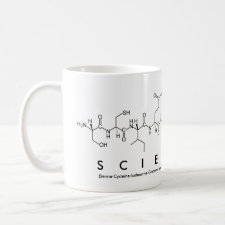
Authors: Almeida SAA, Truta LAAN, Queirós RB, Montenegro MCBS, Cunha AL, Sales MGF
Article Title: Optimizing potentiometric ionophore and electrode design for environmental on-site control of antibiotic drugs: Application to sulfamethoxazole.
Publication date: 2012
Journal: Biosensors and Bioelectronics
Volume: 35
Issue: (1)
Page numbers: 319-326.
DOI: 10.1016/j.bios.2012.03.007
Alternative URL: http://www.sciencedirect.com/science/article/pii/S095656631200173X
Abstract: Potentiometric sensors are typically unable to carry out on-site monitoring of environmental drug contaminants because of their high limits of detection (LODs). Designing a novel ligand material for the target analyte and managing the composition of the internal reference solution have been the strategies employed here to produce for the first time a potentiometric-based direct reading method for an environmental drug contaminant. This concept has been applied to sulfamethoxazole (SMX), one of the many antibiotics used in aquaculture practices that may occur in environmental waters. The novel ligand has been produced by imprinting SMX on the surface of graphitic carbon nanostructures (CN) < 500 nm. The imprinted carbon nanostructures (ICN) were dispersed in plasticizer and entrapped in a PVC matrix that included (or not) a small amount of a lipophilic additive. The membrane composition was optimized on solid-contact electrodes, allowing near-Nernstian responses down to 5.2 μg/mL and detecting 1.6 μg/mL. The membranes offered good selectivity against most of the ionic compounds in environmental water. The best membrane cocktail was applied on the smaller end of a 1000 μL micropipette tip made of polypropylene. The tip was then filled with inner reference solution containing SMX and chlorate (as interfering compound). The corresponding concentrations were studied for 1 x 10-5 to 1 x 10-10 and 1 x 10-3 to 1 x 10-8 mol/L. The best condition allowed the detection of 5.92 ng/L (or 2.3 x 10-8 mol/L) SMX for a sub-Nernstian slope of -40.3 mV/decade from 5.0 x 10-8 to 2.4 x 10-5 mol/L. The described sensors were found promising devices for field applications. The good selectivity of the sensory materials together with a carefully selected composition for the inner reference solution allowed LODs near the nanomolar range. Both solid-contact and ''pipette tip''-based sensors were successfully applied to the analysis of aquaculture waters
Template and target information: sulfamethoxazole, SMX
Author keywords: Antibiotic contaminants, Low detection limit, Potentiometry, Solid-contact electrodes, plastic antibodies



Join the Society for Molecular Imprinting

New items RSS feed
Sign-up for e-mail updates:
Choose between receiving an occasional newsletter or more frequent e-mail alerts.
Click here to go to the sign-up page.
Is your name elemental or peptidic? Enter your name and find out by clicking either of the buttons below!
Other products you may like:
 MIPdatabase
MIPdatabase









